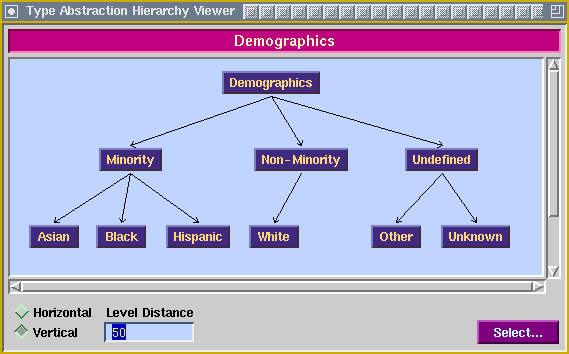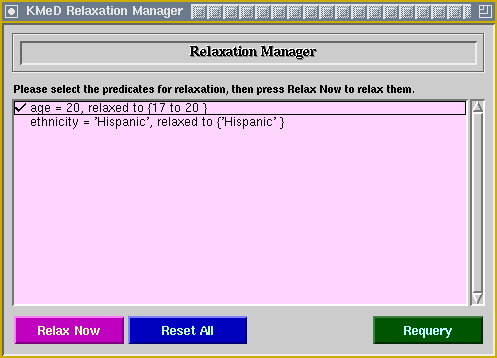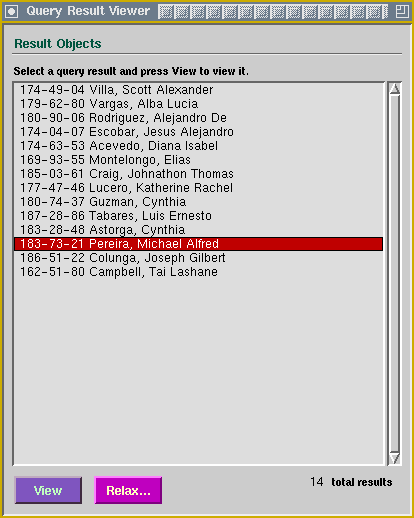|
|
|
|
|
|
|
|
 |
||||||
|
The KMeD project has completed. The KMeD website now serves as a historical record of the findings and accomplishments of the KMeD team. A part of the National Science Foundation Scientific Database Initiative Grant IRI 9116849 Last updated on June 12th, 2001 |
|
KMeD stores type abstraction hierarchies (TAHs) that capture generalization and specialization knowledge about its underlying data. The system also provides graphical facilities for viewing and editing these TAHs. Queries that return null results may be relaxed to return a wider scope of related data. TAHs can also be used to perform conceptual or imprecise queries; instead of asking questions about the actual stored data, a user can ask questions on a higher, conceptual level. Sample Type Abstraction HierarchyThe screenshot below illustrates a typical type abstraction hierarchy. This one stores generalization and specialization information for the ethnicity values that are stored in UCLA's Hospital Information System (HIS).
Query 3.1Retrieve patient records for 20-year-old Hispanic patients.The screenshot below illustrates Query 3.1 as expressed in KMeD PICQUERY+. The results of the query are shown below it; note how, with only three results, relaxation may be necessary in order to return a larger set of patients. These patients, though they might not exactly satisfy the conditions of the original query, will at least be close enough to these conditions, depending on the requested degree of relaxation.  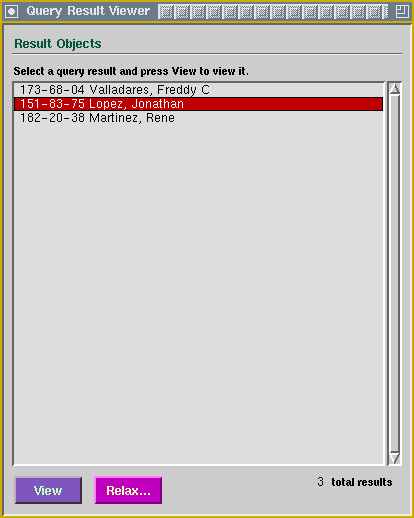 To relax the results of this query, the KMeD Relaxation Manager is invoked (see below). Note how the predicate ``age = 20'' has been relaxed into accepting a broader range of age values.
Query 3.2Retrieve all minority patients who are currently of pre-school age.The screenshot below expresses Query 3.2 in KMeD PICQUERY+. Note the use of concepts such as `pre-school' and `Minority' in the predicates. These concepts, as opposed to numerical values in the age attribute and ethnicity names in the ethnicity attribute, can be located in type abstraction hierarchies that are stored within the KMeD knowledge base. The concept `Minority' can be seen in the TAH screenshot shown above; the origin of the `pre-school' concept can be seen in the TAH fragment for Age that is shown below. 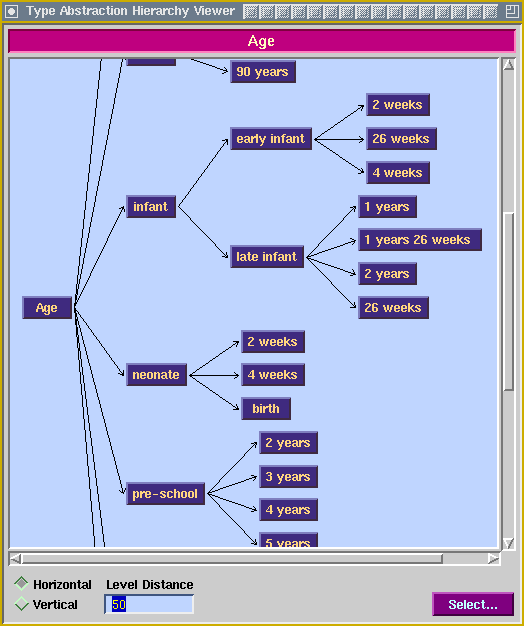 Query 3.2's results are shown in the screenshot below. Click on the image to view one of the returned patients up close; note that patient's true age and race attribute values, locating where they belong in the type abstraction hierarchies shown on this page. |
|
|
| Return to the previous KMeD page |
